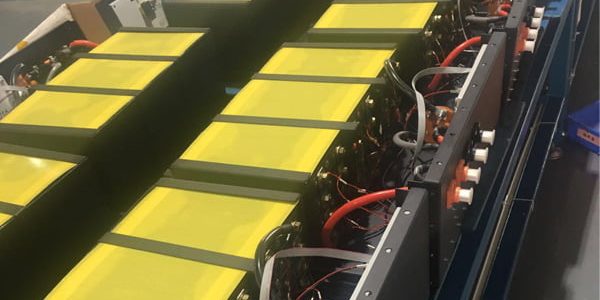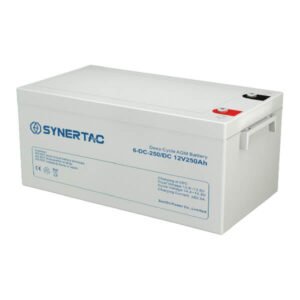For Audio, Please Click Below The PLAY Button
LFP battery is the short name for LiFePO4, also as known Lithium Ferro(Iron) Phosphate Battery. An LFP battery refers to a li-ion battery using lithium iron phosphate as a positive electrode material.
Knowing the relevant voltage of the LFP battery helps to set the reasonable end voltages, so the LFP battery could be working in the most effective and reasonable condition, and offer a safe, stable, and long-lasting power supply.
As the safest lithium technology, the LFP battery has many advantages in energy storage applications.
- l Safe
- l Super Long Cycle Life
- l Light Weight for Easy Handling and Installation
- l Suitable for High Temperature
- l Environmentally friendly
LFP Battery Cell Voltage
Due to the difference in various raw materials used by each manufacturer(including positive, negative electrode materials, and electrolytes), the performance and voltage of the batteries are not exactly the same. In general conditions, the nominal voltage of the LFP battery cell is 3.2V, the high-end voltage is 3.6V, and the low-end voltage is 2.0V.
The charging voltage of the LFP battery cell is recommended as 3.65V, 14.6V+-0.2V for a 12.8V battery. 3.65V per cell is proven to be a reasonable charging voltage after long-time practical use.
The relevant voltage of the LFP battery is different in different conditions. Mainly in 3 cases, open-circuit voltage (OCV), charging condition, and discharging condition. In applications, the charging and discharging voltage are more useful, involving a reasonable set of end voltages to ensure that the battery works in a good and stable situation.
LFP Battery Voltage In Charging Condition(0.5C, 25℃)
Here, 0.5C means charging at a current of 0.5*(number of capacity)A. For example, a 12.8V100Ah LFP battery is charged at 14.6V with 50A current. SOC means the State Of Charge, which means the percentage of energy remaining.
| SOC | Voltage |
| 100% | 14.60V |
| 80% | 13.90V |
| 60% | 13.70V |
| 40% | 13.60V |
| 20% | 13.40V |
| 5% | 12.5V |
The charging curve is shown below:

The voltage will be different if charge with a different number of current. The bigger the current, the higher the voltage.
LFP Battery Voltage In Discharge Condition(0.5C, 25℃)
Just like the above condition in CHARGE, here for a 12.8V100Ah battery, it means discharge at 50A.
| SOC | Voltage |
| 75% | 12.85V |
| 50% | 12.75V |
| 20% | 12.55V |
| 10% | 12.24V |
| 5% | 11.90V |
Note the related voltage will also be different if the discharge current is different.
For most energy storage applications, a DOD of 80% is reasonable and effective.
Based on the above data, the end voltage can be set at 12.55V, but please note that for smaller currents such as 10A, the discharge depth will still exceed 80% even when the voltage is higher than 12.55V.
And it is recommended to set the overcharge voltage at 15.60V to avoid overcharging the battery.
Notes for Voltage Difference
1. The voltages of different lithium batteries from different materials are different.
2. For the same LFP battery, same SOC (for example 20%), the voltage varies depending on the discharge current. The higher the discharge current, the lower the voltage.
3. The effect of ambient temperature on the battery voltage. The lower the temperature, the lower the voltage.
4. The impact after cycle use. After a long time of use, the voltage will also be different.
5. Different manufacturers, the different capacities of LFP batteries, the discharge voltage is slightly different.
OK, hope this post will help you understand more about the LFP battery voltage and SOC/Capacity, then a better use of your precious LFP battery.
12V LFP Battery
12V LFP battery is an easy replacement for 12V lead-acid battery, only required to replace the battery, even no need to change the cables. Now with affordable prices and improved BMS technology, Sunon 12V LFP battery is perfect for energy storage applications such as solar & renewable industry, telecom base station, UPS & backup power, CCTV & security system, etc.
For more information, please click the button below.







14 Responses
I have a bank of 3-48 volt LFP batteries (11kw each) that I bought direct from a distributor in China.
My problem is with the specs they gave me of 44v-54v.
The initial states of charge when I received them were between 48.2 and 48.8 volts.
When I charged them up, the voltage increase started stalling significantly at around 49.7 volts, and very very slowly worked up to around 51.1 volts and stalled there.
The batteries have inetgral BMS, so I’m thinking that the BMS may have started curtailing the charge at around 49.7 vols, indicating that I may be around 85% full there.
Conversely, the batteries cut out at around 44.5 volts, which the BMS may have curtailed at around 15%.
I ran the batteries through 2 succesive chage/discharge cycles, so this would seem indicative of a 5.2 volt spread between say 15% and 85% charge.
The stall in charging at 51.1 volts seems to be very low from the data that you’ve published here.
Is there any other means to derive a reasonable estimate of state of charge for these LFP’s?
Hi Bob,
The 48V LFP battery is always made up of 15S(15 pcs in series) or 16S.
But, as your highest voltage is 51.1V while charging, I am still not sure how many pieces of cells are in series.
LFP battery voltage curve is flat, so it is better to monitor the current if possible.
Do you have a more detailed specification of your battery?
By the way, a Victron SHUNT would be a good battery status monitor.
https://www.victronenergy.com/battery-monitors/smart-battery-shunt
Andy
There is a big difference between 15 piece and a 16 piece cell arrangement. My 10.24 KWH battery has 16 cell arrangement, so my high end voltage and low end voltage are considerably different than the 15 piece LiFePo4.
Mike
Hi Mike,
Yes, the battery pack voltage will be different for 15 cells and 16 cells.
In my opinion, for common conditions, 2.50V per cell will be a good discharge low end and 3.60V will be a reasonable charge high end.
It is not necessary to charge the battery to 100% full.
Much better performance will be gained while a little of the top capacity is not charged.
Andy
Hi Andy – we have two 48v LiFeP04 batteries with BMS on board. They are wired in parallel and we have noticed that one of them discharges much more quickly and to a lower level than the other. However, when looking at status one can be down to 20% and still discharging but showing a voltage of 51.9, and the other can be at around 58% and showing a voltage of 51. Can you make sense of this? we are new to the technology but kind of assumed being wired in parallel would make them charge and discharge cohesively. Any advice you can give would be greatly appreciated.
Hi Donna,
Have you connected the communication ports to each other battery?
If yes, the BMS shall balance each other.
Or you may connect the 2 batteries in parallel in a GOOD way, DO NOT connect both main positive and negative on the same battery.
Please check below the link for details:
https://sunonbattery.com/properly-charge-lifepo4-battery/#elementor-toc__heading-anchor-3
Part4. Charge in Parallel
Andy
Hi Andy,
I have 1 LFP cylindrical 600 mAh cell. For my application I am looking for an effective way to indicate low charge at 10% SoC level. Due to the fact that LFP has very flat OCV curve and high dépendance on the Temperature, it is hard for me to find a suitable voltage which can be used for all the temperatures. Do you have any other idea to select a voltage to indicate low charge?
Thanks
Hi Gthu,
For protection purpose, it is recommended to set the discharge end voltage at 3.0V/cell.
It is around 10% energy left in low current conditions, and a little more than that while high currents.
Andy
Hi Andy,
I’m new to LiFePo4/LFP batteries. I have a couple of questions about my application and hope you can comment with your opinions.
I connected three 12v 100ah lifepo4 batteries in series to replace six 6V wet cell batteries in my EZGo 36V golf cart.
I installed an onboard 3 bank lifepo4 charger (individual connections to each battery).
Since each battery is connected to an individual charger, I assumed that adding a balancing device would be redunant. Do you agree, or is a balancer still needed?
I installed a gage on the golf cart that shows total voltage (about 39-40 volts when fully charged). When I accelerate from stand still, the gage dips dramatcally until cruise speed is reached, then settles back up near original voltage. Can a large dip in voltage trigger the BMS to shut down, or does the BMS allow for short duration below trip voltage?
All working well so far, but a BMS shut down will leave me stranded on the golf course, so I want to be able to monitor and know when to recharge.
Thanks for any opinions.
Steve
Hi Steve,
To your first question, the balancer is not necessary as you are charging them independently.
Charge to full will make them rebalanced again.
While in static state, the voltage within 39.6V to 40.2V is good without charger connected.
But if in charge state, the voltage has to be at least 42.0V to reach the fully charge state.
When there is a high discharge current, the voltage will drop significantly.
The under-voltage protection is at 2.5V per cell, 30V for your total battery group.
The protection will only allow a few microseconds, so it is possible to trigger the protection while the battery group is at a low SOC (energy).
It will recover after 30 seconds or more if the voltage recovers from under 2.5V per cell.
I think you can get a current meter for your battery group, which will how much energy is left inside.
There are 2 kinds of battery meters, one is based on the voltage, not accurate.
Another is based on the time and current, which will calculate how much energy is consumed.
Andy
Hi Andy
I have two 100ah lithium Batteries connected in series. Have noticed that when charged one can reach soc 100% at 14.4v while the other one is soc 79% at 12.9v.what could be the problem?
Hi Murray,
Unlike lead-acid batteries, when two lithium batteries are connected in series, after one battery is charged to full, it shuts down the circuit.
Then the other battery is not able to charge to full.
The solution is to charge the two batteries to full one by one, then connect them in series.
Andy